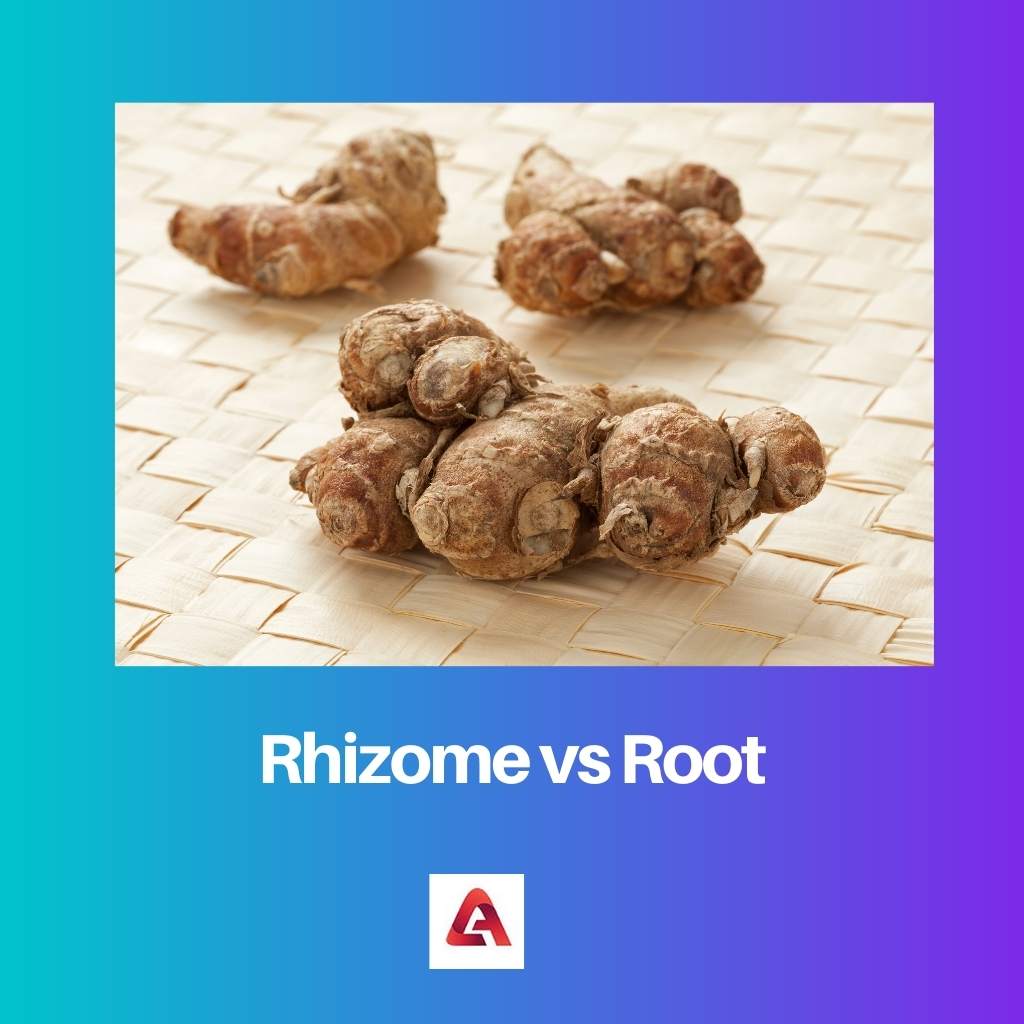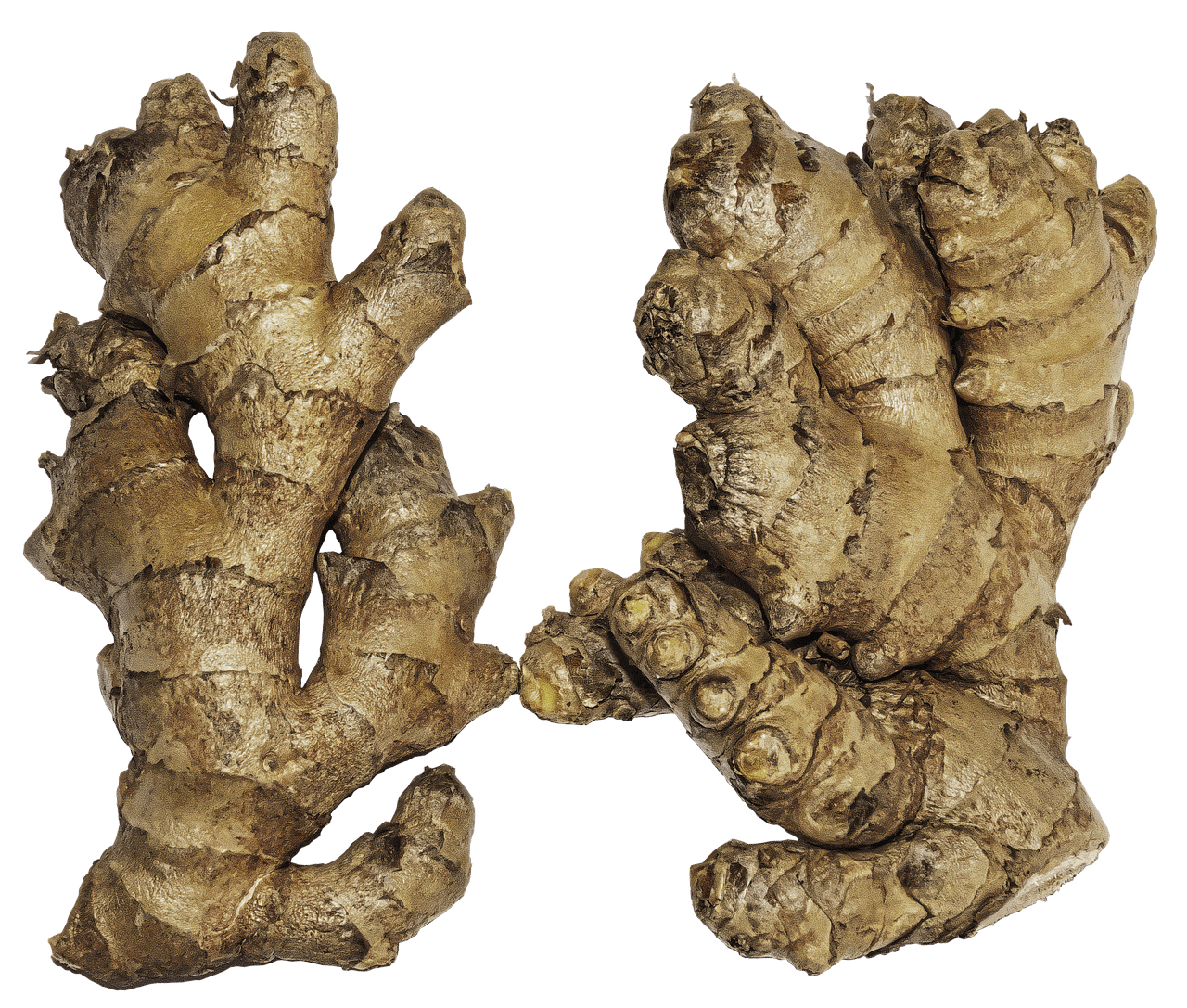The major components of a plant are leaves, stems, and roots. Additionally, they are of various types and differ variably in structure and function.
Key Takeaways
- Rhizomes are stemming that grow horizontally underground, while roots are underground structures that anchor the plant and absorb water and nutrients.
- Rhizomes have nodes and internodes, while roots do not have nodes and internodes.
- Rhizomes can grow new shoots and roots, while roots cannot produce new shoots and can only grow new roots from their tips.
Rhizome vs Root
A rhizome is a type of stem which grows under the ground. The shape of the rhizome can be horizontal. Rhizome stores food. If a plant has a rhizome, then it will be considered its first stem. Ginger is an example of a rhizome. A root provides support to the plant. A root grows under the ground. A carrot is an example of a root.

Rhizomes are stem modifications that grow horizontally below the earth. They have nodes, internodes, buds, and small leaves. Their main function is the storage of food.
Roots are an essential part of the plant and hold the plant to the ground. It consists of the primary root, secondary root, root hair, and root tip.
Comparison Table
| Parameters of Comparison | Rhizome | Root |
|---|---|---|
| Meaning | Stem modifications that grow horizontally below the earth. | Anchor of the plant that holds the plant to the ground. |
| Category | Modified stem | Root system |
| Function | Storage of food and vegetative propagation. | Absorption of food, storage of food, prevention of soil erosion, and holds plants in place. |
| Examples | Poison oak, bamboo, asparagus, cast iron plants, Calathes. | Every plant has roots. |
| Examples(edible) | Ginger, turmeric, lotus. | Turnip, carrot, radish, beetroot. |
What is Rhizome?
Rhizome comes from a Greek word that means ‘to take root’. Rhizomes are horizontal stem that grows underground. It is a modification of the stem. It sends out roots and stems from its nodes.
Rhizomes-when present in the plant, acts as the first stem. They grow beneath the ground without any exposure to light. Rhizomes are sometimes also called rootstalk or creepy rootstalk.
Rhizome’s prime function is storing food (carbohydrates, proteins, and other nutrients), making their structure thick.

What is Root?
Roots anchor the plant to the ground and hold them in place. Their primary function is to absorb water and nutrients from the earth for the plant.
There are two types of roots: the Taproot system and the Fibrous root system. In the tap root system, one root, known as the primary root, grows vertically, and many other small secondary roots grow from them.
Roots have a root cap to protect the root tip. The root tip helps the new cells to grow and helps the root to dig deeper into the ground. The root cap also helps in the movement of the root.
The function of root hair is to absorb water and mineral from the ground and transports them to the upper parts of plants. Roots can also be used to store food, as in cases of rhizomes.

Main Differences Between Rhizome and Root
- Rhizomes are rare, while the root is found in every plant.
- Rhizome helps in the vegetative propagation of the plant, while roots do not help in the reproduction of plants.

- https://journals.ashs.org/hortsci/view/journals/hortsci/41/3/article-p536.xml
- https://www.jstor.org/stable/23499378?seq=1

This is a fascinating and well-written explanation of the major components of plants. I learned a lot about rhizomes and roots.
I agree, it’s very informative. Thanks for sharing!
I was already familiar with the differences between rhizomes and roots, but you explained it so clearly. This post will be helpful for those seeking to learn more about plants.
The accurate and detailed nature of the content makes it a must-read for anyone interested in botany.
The post provides a serious and thorough examination of rhizomes and roots that is sure to benefit anyone studying plant biology.
Absolutely, this article is a valuable learning resource for students and enthusiasts alike.
The post effectively distinguishes between rhizomes and roots. It’s loaded with useful information and serves as a valuable educational tool.
I couldn’t agree more. It’s a fantastic piece of writing.
Impressive and well-explained content. It’s evident that the author knows the subject well.
The details provided are very thorough and accurate. It’s nice to see comprehensive information on this topic.
Well said, it’s clear that the author has done their research.
The content is educational and presents an in-depth comparison between rhizomes and roots. I appreciate the knowledge shared here.
This material is a great resource for individuals majoring in biology or botany. It’s very detailed and easy to understand.
I admire how the author conveys complex information in a clear and concise way.
This is a top-notch analysis providing an insightful comparison between rhizomes and roots.
The content here is highly informative and valuable. The explanations are detailed and well-crafted.
Completely agree, the thoroughness of the information is impressive.
I found this breakdown of rhizomes and roots to be enlightening and engaging. It’s well-organized and answers a lot of questions.
The post is commendable for its clarity and comprehensive coverage of the topic.
Absolutely, the comparison table is particularly helpful.